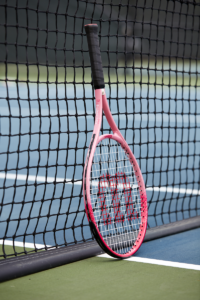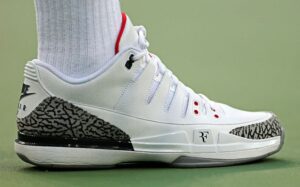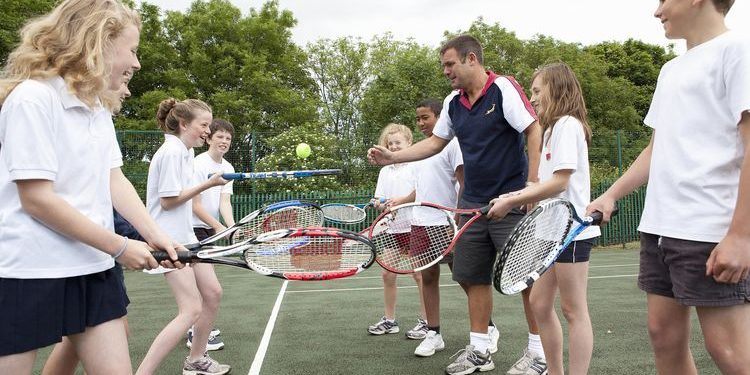Tennis Beginner vs Intermediate Main Differences?
When it comes to tennis, there are several main differences between beginners and intermediate players. These differences can be observed in various aspects of the game, including technique, strategy, consistency, and overall skill level. Here are the main contrasts between a tennis beginner and an intermediate player:
- Technique: Beginners often struggle with proper stroke technique and footwork. They may have inconsistent or incorrect grips, improper foot positioning, and difficulty generating power and control. Intermediate players, on the other hand, have a more refined technique with better form and more fluid strokes. They have developed a consistent and efficient swing that allows them to hit the ball with accuracy and power.
- Shot variety: Beginners typically rely on basic shots such as the forehand and backhand, while intermediate players have a wider range of shots in their arsenal. Intermediate players are more comfortable with volleys, overheads, slices, and topspin shots. They can vary the pace, spin, and trajectory of their shots to keep their opponents off balance.
- Consistency: Beginners often struggle with consistency in their shots. They may have difficulty hitting the ball consistently over the net and within the court boundaries. Intermediate players, on the other hand, have developed better control and consistency. They can maintain a rally by consistently hitting the ball in play, reducing unforced errors.
- Court coverage: Beginners may have limited movement and struggle to cover the court effectively. They may be slow to react and have difficulty reaching wide shots. Intermediate players have better footwork and court coverage. They anticipate the ball’s trajectory and position themselves well to reach difficult shots and maintain balance while hitting on the move.
- Strategy: Beginners usually have a limited strategic understanding of the game. They may focus primarily on just getting the ball over the net. Intermediate players have a better understanding of the game and can employ tactics such as setting up points, exploiting opponents’ weaknesses, and adapting their game plan to different opponents and court conditions.
- Serve and return: Beginners typically have a weaker serve with inconsistent ball toss and limited power. They struggle to consistently get their serves in play. Intermediate players have a more developed serve with better ball placement, power, and spin. They also have better return skills, including anticipation and the ability to put pressure on their opponent’s serve.
- Mental game: Beginners often struggle with the mental aspect of tennis, including managing emotions, dealing with pressure, and staying focused during matches. Intermediate players have a better grasp of the mental game. They can stay composed, make better decisions under pressure, and handle the ups and downs of a match more effectively.
It’s important to note that the distinction between beginner and intermediate is not always clear-cut and can vary depending on the individual. These differences are generalizations and not absolute. With practice, dedication, and coaching, a beginner can progress to an intermediate level and beyond.
Definition of a Tennis Beginner
A tennis beginner is someone who has just started playing the sport or has limited experience. They may be unfamiliar with the rules, lack proper technique, and have a limited understanding of tennis strategy. Beginners often struggle with consistency and may find it challenging to execute shots with accuracy.
Also, read about 7 Essential Tips to Improve Tennis Quickly
Definition of a Tennis Intermediate
A tennis intermediate has progressed beyond the beginner stage and possesses a more solid foundation of skills and knowledge. Intermediates have a better grasp of the rules, can consistently rally with other players, and demonstrate improved shot-making abilities. They are more comfortable with different strokes and are capable of playing matches with a reasonable level of competitiveness.
Also, read How Long Does it Take to Learn Tennis
Also, read How to Play Tennis with 3 Players
Skill Level
Basic Stroke Proficiency
Beginners typically struggle with executing the fundamental strokes such as forehand, backhand, volley, and serve. They may lack proper form and technique, resulting in inconsistent and less powerful shots. Intermediates, on the other hand, have developed a better understanding of stroke mechanics, allowing them to generate more power and control over their shots.
Want to Know How to Play Tennis Alone Click Here

Consistency and Accuracy
Beginners often find it difficult to maintain consistency and accuracy in their shots. Their strokes may be inconsistent, leading to frequent errors. Intermediates, having practiced more, demonstrate improved consistency and accuracy in their shot placement and control.
Court Coverage
Beginners tend to have limited court coverage due to slower footwork and lack of anticipation. They may struggle to reach wide shots or return difficult balls. Intermediates have better footwork and court movement, allowing them to cover a larger area and retrieve challenging shots more effectively.
Technique
Grip and Swing Mechanics
Beginners often have incorrect grip positions, which can limit their ability to generate power and control. As they progress to the intermediate level, players develop a better understanding of proper grip techniques, enabling them to generate more spin and power in their shots.
Footwork and Balance
Footwork is crucial in tennis as it determines a player’s ability to reach and position themselves for shots effectively. Beginners may struggle with footwork, resulting in poor balance and positioning on the court. Intermediates have improved footwork, enabling them to move quickly and efficiently, maintaining better balance during rallies.
Serve Technique
The serve is one of the most important shots in tennis. Beginners often have a limited understanding of the serve technique and may struggle with consistency and power. Intermediates have refined their serve technique, allowing them to generate more power, accuracy, and variety in their serves.

Strategy
Shot Selection
Beginners often rely on basic shot selection, primarily focusing on keeping the ball in play. They may lack the ability to anticipate and execute more advanced shots. Intermediates possess a wider range of shot selection, incorporating different spins, angles, and strategies to outmaneuver their opponents.
Court Positioning
Beginners tend to stay in the middle of the court, making it easier for their opponents to exploit the angles and control the points. Intermediates understand the importance of court positioning and utilize it strategically to control the flow of the game, taking advantage of their opponent’s weaknesses and creating opportunities for winners.
Tactics and Game Plans
Intermediates develop a better understanding of tactical strategies and game plans. They can analyze their opponents’ weaknesses and adjust their gameplay accordingly. Beginners may struggle with formulating effective strategies and adapting during matches.
Equipment
Rackets
Beginners usually start with entry-level rackets that offer a good balance of power and control. As they progress, intermediates may choose rackets that suit their playing style, providing them with more control, spin, or power, depending on their preferences.
Also, read about Top Tennis Racket Brands

Strings
String tension and type play a significant role in the feel and performance of a tennis racket. Beginners often use pre-strung rackets with generic strings. Intermediates may experiment with different string types and tensions to optimize their racket’s performance based on their playing style.

Shoes
Proper footwear is essential for comfort, support, and injury prevention on the tennis court. Beginners typically wear general-purpose athletic shoes, while intermediates may invest in specialized tennis shoes that offer better stability, traction, and durability.
Also, read Top Tennis Shoes Brands

Mindset
Confidence and Self-Belief
Beginners often lack confidence in their abilities, leading to hesitations and self-doubt during matches. Intermediates have built a more confident mindset, allowing them to trust their skills and make more assertive decisions on the court.
Adaptability and Resilience
Intermediates demonstrate greater adaptability and resilience in handling different match situations. They can adjust their game plan and strategies based on the circumstances, making them more difficult to defeat. Beginners may struggle with adapting to changing game dynamics and may become disheartened when faced with adversity.
Mental Toughness
Intermediates have developed mental toughness, allowing them to stay focused and composed under pressure. They can effectively manage stress, maintain a positive attitude, and recover quickly from setbacks. Beginners may find it challenging to handle the mental aspect of the game, impacting their overall performance.
Conclusion
In conclusion, the main differences between tennis beginners and intermediates lie in their skill level, technique, strategy, equipment, and mindset. Beginners are characterized by limited experience, inconsistent strokes, and a basic understanding of the game, while intermediates demonstrate improved proficiency, better technique, and more strategic thinking. As you progress from a beginner to an intermediate level, focusing on improving your skills, refining your technique, and developing a confident and adaptable mindset will help you bridge the gap and become a more accomplished tennis player.
FAQs
- Q: How long does it take to go from a tennis beginner to an intermediate level?A: The time it takes to progress from a beginner to an intermediate level in tennis can vary depending on factors such as practice frequency, natural ability, and coaching. On average, it may take several months to a couple of years of consistent practice and dedication.
- Q: Can a beginner beat an intermediate player in tennis? A: While it is possible for a beginner to beat an intermediate player occasionally, the skill gap between the two levels usually favors the intermediate player. As beginners improve their skills, the likelihood of defeating an intermediate player increases.
- Q: What are some recommended training drills for tennis beginners? A: Tennis beginners can benefit from drills that focus on building fundamental strokes, footwork, and court awareness. Some recommended drills include baseline rallies, volleys and overheads against a wall, and agility ladder exercises.
- Q: Should beginners invest in expensive tennis equipment? A: It is not necessary for beginners to invest in expensive tennis equipment. Starting with affordable, beginner-friendly equipment is recommended. As their skills and commitment to the sport grow, they can consider upgrading their equipment.
- Q: How important is the mindset in tennis? A: Mindset plays a crucial role in tennis. A positive and focused mindset can enhance performance, decision-making, and overall enjoyment of the game. Developing mental resilience and confidence is beneficial at all levels of play.











